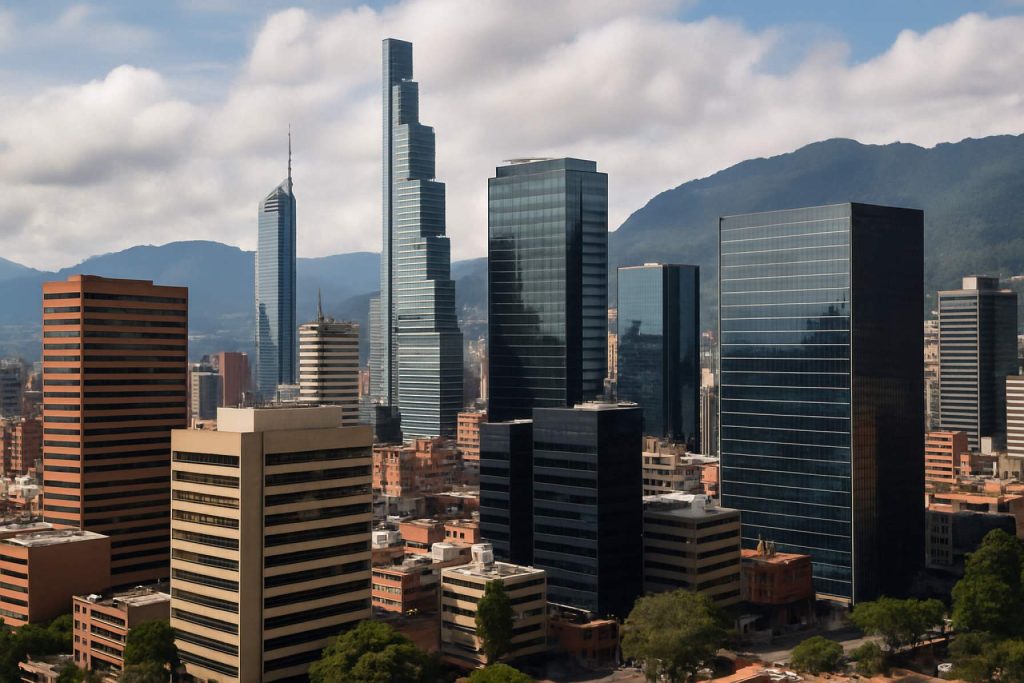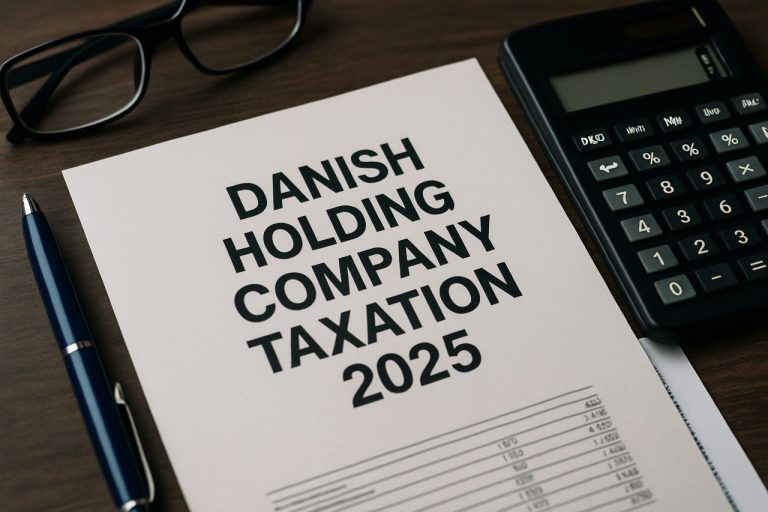
Table of Contents
- Executive Summary: Key Findings for 2025 and Beyond
- Market Overview: Current Landscape and Growth Drivers
- Economic Context: Macroeconomic Factors Impacting CRE
- Key Statistics: Vacancy Rates, Yields, and Price Movements
- Investment Hotspots: Cities and Sectors to Watch
- Legal and Tax Framework: Essential Laws, Recent Changes, and Incentives
- Compliance and Regulatory Environment: Navigating Permits and Zoning
- Foreign Investment: Opportunities, Barriers, and Official Policies
- Future Outlook: Forecasts and Emerging Trends Through 2030
- Official Resources and Contacts: Where to Get Authoritative Information
- Sources & References
Executive Summary: Key Findings for 2025 and Beyond
The commercial real estate (CRE) sector in Colombia is poised for moderate growth in 2025, driven by ongoing urbanization, infrastructure improvements, and a resilient business climate. Despite global economic uncertainties, Colombia’s CRE market remains attractive for both domestic and foreign investors, underpinned by favorable legal frameworks and government incentives. Key findings for 2025 and the coming years are summarized below.
- Market Recovery and Growth: Following the pandemic-induced slowdown, Colombia’s commercial property sector is showing signs of recovery, particularly in major urban centers such as Bogotá, Medellín, and Barranquilla. The government’s infrastructure initiatives, including transportation and logistics upgrades, are expected to stimulate demand for office, retail, and industrial spaces (Ministerio de Vivienda, Ciudad y Territorio).
- Legal and Compliance Framework: Colombia has made significant strides in improving its regulatory environment for real estate transactions. The 2022 update to the Urban Reform Law has streamlined permitting and land-use procedures, making it easier for investors to acquire and develop commercial properties (Contraloría General de la República). Compliance with anti-money laundering (AML) and know-your-customer (KYC) regulations remains a priority, with close supervision from the Superintendencia Financiera de Colombia.
- Key Statistics: In 2024, the total CRE investment volume in Colombia surpassed USD 1.5 billion, with office and logistics assets accounting for more than 60% of transactions. Vacancy rates in Bogotá’s prime office market stood at 11%, while industrial assets saw sustained demand due to e-commerce growth (Departamento Administrativo Nacional de Estadística).
- Foreign Investment and Incentives: The Colombian government continues to promote foreign direct investment (FDI) through tax incentives and free trade zones, particularly for logistics and technology park developments. FDI inflows into real estate are expected to remain stable, supported by bilateral investment treaties (ProColombia).
- Outlook: For 2025 and beyond, Colombia’s CRE sector is projected to grow at an annual rate of 4–6%, outpacing much of the region. Risks include exchange rate volatility and political uncertainty, but structural reforms and compliance enhancements are likely to bolster long-term investor confidence.
Market Overview: Current Landscape and Growth Drivers
The commercial real estate (CRE) market in Colombia is undergoing significant transformation as the economy shows resilience amid global uncertainties. As of 2025, urban centers such as Bogotá, Medellín, and Barranquilla continue to attract domestic and international investors, driven by Colombia’s GDP growth, stable macroeconomic policy, and ongoing infrastructure investments. The sector is characterized by office buildings, retail complexes, industrial parks, logistics facilities, and an emerging interest in mixed-use developments.
According to data from Departamento Administrativo Nacional de Estadística (DANE), the construction sector—including commercial real estate—contributed approximately 7% to Colombia’s GDP in 2024, with commercial property investments rebounding after pandemic-related slowdowns. Key growth drivers include the expansion of e-commerce, which has increased demand for logistics and warehousing, and a growing middle class that fuels retail and office space needs. Major cities continue to see new office and retail projects, although some submarkets face oversupply, prompting a shift toward flexible workspaces and mixed-use concepts.
On the legislative front, Law 820 of 2003 and Law 675 of 2001 provide the foundation for property leasing and horizontal property regimes, respectively. Recent regulatory updates, such as Superintendencia Financiera de Colombia’s enhanced transparency and reporting standards for real estate investment trusts (Fideicomisos de Inversión Inmobiliaria), aim to foster investor confidence and market transparency. Compliance with anti-money laundering regulations, outlined by Unidad de Información y Análisis Financiero (UIAF), remains a top priority, particularly for large transactions and international investors.
Vacancy rates in prime office spaces in Bogotá hovered around 10-12% in late 2024, reflecting ongoing adjustments in demand as hybrid work models persist (Cámara de Comercio de Bogotá). Meanwhile, retail and industrial segments have shown greater resilience, supported by sustained consumer spending and logistics modernization. Foreign direct investment in real estate increased by approximately 8% year-on-year, according to Banco de la República data, underscoring the sector’s attractiveness.
Looking ahead, Colombia’s commercial real estate outlook for 2025 and beyond is cautiously optimistic. Structural reforms, urbanization trends, and government-backed infrastructure projects—such as the Bogotá Metro and logistics corridor expansions—are set to drive sustained demand. However, investors must remain vigilant to regulatory changes, compliance requirements, and evolving market dynamics to capitalize on growth opportunities in Colombia’s evolving CRE landscape.
Economic Context: Macroeconomic Factors Impacting CRE
Colombia’s commercial real estate (CRE) sector in 2025 is shaped by a dynamic macroeconomic environment, marked by moderate economic recovery, persistent inflationary pressures, and continued fiscal reforms. According to Banco de la República, Colombia’s GDP growth is forecast to stabilize around 2-3% for 2025 after a slowdown in 2023-2024, signaling gradual but steady improvement in business confidence and investment appetite. Headline inflation, which peaked above target in recent years, is expected to return closer to the central bank’s 3% target by late 2025, easing pressure on both operating costs and financing for CRE investors.
Interest rates remain a key factor: benchmark rates reached historic highs in 2022-2023 to combat inflation but are projected to gradually decline through 2025, improving access to credit and reducing borrowing costs for property development and acquisition Banco de la República. However, monetary policy normalization is expected to be cautious, reflecting ongoing global uncertainties and Colombia’s external vulnerabilities, particularly to commodity prices and capital flows.
Exchange rate volatility continues to impact foreign investment in CRE, as the Colombian peso remains sensitive to international interest rates and oil prices—the country’s main export. This currency risk is a consideration for multinational tenants and investors, who may seek hedging solutions or prefer dollar-denominated leases in prime assets. The government, through Ministerio de Hacienda y Crédito Público, has reinforced its commitment to macroeconomic stability, fiscal responsibility, and attracting foreign direct investment, which is crucial for large-scale CRE projects.
Urbanization trends, a growing middle class, and the rise of e-commerce are driving demand for logistics, industrial parks, and mixed-use developments, especially in major cities like Bogotá, Medellín, and Barranquilla. Data from Departamento Administrativo Nacional de Estadística (DANE) highlight sustained urban population growth, supporting retail and office absorption rates. However, oversupply in certain office submarkets and evolving work patterns post-pandemic may temper rental growth and require adaptive reuse strategies.
In summary, while Colombia’s CRE sector in 2025 faces challenges from global economic headwinds and domestic structural reforms, the outlook remains cautiously optimistic. Macroeconomic stabilization, pro-investment policies, and demographic trends are expected to underpin gradual recovery and new opportunities across asset classes over the next several years.
Key Statistics: Vacancy Rates, Yields, and Price Movements
The commercial real estate sector in Colombia continues to evolve in 2025, shaped by macroeconomic trends and sector-specific dynamics. Vacancy rates, rental yields, and pricing movements vary across the principal commercial sub-markets, reflecting differential demand and supply factors in office, retail, and industrial segments.
According to data from the Departamento Administrativo Nacional de Estadística (DANE), the national office vacancy rate remained elevated in major cities such as Bogotá and Medellín, standing at approximately 12% in early 2025. This level, while slightly improved from the pandemic peak, is above long-term averages, influenced by hybrid work arrangements and cautious corporate expansions. The retail segment exhibits moderate recovery with vacancy rates hovering around 7-8% in prime shopping centers, supported by growing consumer confidence and the stabilization of brick-and-mortar retail.
Rental yields for institutional-grade commercial properties in Colombia have stayed resilient. The Superintendencia Financiera de Colombia reports that average annualized yields for Grade A office space in Bogotá are in the range of 7% to 8% in 2025, while logistics and industrial assets achieve slightly higher yields of 8% to 9%, reflecting robust demand from e-commerce operators and manufacturers. Retail yields, after compressing in 2021-2023, have gradually increased to around 7%, driven by improved tenant performance and reduced incentives.
Price movements remain segmented by asset class and location. The DANE construction price indices indicate that, in 2024-2025, commercial property prices in Bogotá’s central business districts have stabilized, with modest appreciation of 2-3% year-on-year, following a period of correction. Peripheral and secondary markets are experiencing lower price growth due to slower absorption.
- Office vacancy rates: ~12% (Bogotá, Medellín)
- Retail vacancy rates: 7-8% (prime centers)
- Office yields: 7-8%
- Industrial yields: 8-9%
- Retail yields: ~7%
- Prime commercial property price growth: 2-3% YoY
Looking ahead, the sector’s outlook is cautiously optimistic, with continued demand for quality logistics and resilient retail, while office markets gradually adapt to new occupational patterns. Regulatory oversight and macroeconomic stability will remain key factors influencing yield compression and capital flows in Colombia’s commercial real estate market.
Investment Hotspots: Cities and Sectors to Watch
Colombia’s commercial real estate landscape is dynamic, with certain cities and asset classes emerging as investment hotspots heading into 2025. The nation’s stable macroeconomic fundamentals, combined with ongoing urbanization and infrastructure investments, have shaped a market where both domestic and foreign investors are seeking opportunities in office, retail, logistics, and hospitality sectors.
Bogotá remains the epicenter of commercial real estate activity. The capital city, accounting for over 30% of national GDP, continues to attract large-scale office and mixed-use developments, particularly in the north and central business districts. Vacancy rates in prime office spaces have shown resilience, with gradual absorption expected as economic growth accelerates and foreign direct investment increases. Government-backed infrastructure projects, such as the Bogotá Metro and expanded TransMilenio lines, are further boosting the attractiveness of adjacent commercial corridors (Ministerio de Transporte).
Medellín, Colombia’s second-largest city, has distinguished itself as a hub for technology, innovation, and creative industries. The city’s transformation into a digital and logistics center has underpinned demand for flexible office spaces and modern industrial parks, particularly in the El Poblado and Guayabal districts. Medellín’s municipal government actively promotes public-private partnerships (PPPs) to facilitate real estate development and urban renewal (Alcaldía de Medellín).
Barranquilla and Cartagena have emerged as leading destinations for logistics and hospitality investments. The expansion of Caribbean ports and special economic zones, coupled with tourism growth, have driven demand for warehousing, hotels, and retail centers near port facilities and airport corridors (Dirección de Impuestos y Aduanas Nacionales (DIAN)). Notably, the government’s free trade zone regime and customs incentives are key drivers for new industrial park launches in these coastal cities.
From a legal and compliance perspective, Colombia’s commercial real estate sector is governed by a combination of national statutes and local zoning regulations. Recent reforms have streamlined procedures for obtaining construction licenses and foreign investment registration, aiming to reduce administrative bottlenecks (Superintendencia de Notariado y Registro). Investors must remain attentive to evolving land-use plans (POTs) and environmental compliance standards, which are strictly enforced by municipal authorities.
Looking ahead to 2025 and beyond, the outlook for Colombia’s commercial real estate market is positive. The sector is expected to benefit from continued GDP growth (projected at 3.5% for 2025), expanding middle class consumption, and the government’s commitment to public infrastructure and urban development (Departamento Administrativo Nacional de Estadística (DANE)). Strategic cities—Bogotá, Medellín, Barranquilla, and Cartagena—will remain at the forefront, with logistics, office, and hospitality assets offering compelling investment prospects.
Legal and Tax Framework: Essential Laws, Recent Changes, and Incentives
The legal and tax framework governing commercial real estate in Colombia is underpinned by several statutory instruments, regulatory agencies, and recent reforms aimed at fostering transparency, investment, and compliance. The Civil Code and the Commercial Code serve as the foundational texts defining property rights, contracts, and commercial transactions. The Superintendencia de Notariado y Registro (Superintendency of Notary and Registry) oversees property registration, ensuring legal certainty for titles and real estate transactions.
A vital law in this sector is Law 675 of 2001, which regulates horizontal property and condominium regimes—significant for commercial complexes and mixed-use developments. Foreign investment in real estate is facilitated by Law 9 of 1991 and Law 963 of 2005, establishing the legal stability contracts and currency exchange regulations, administered by Banco de la República (the central bank). These laws allow foreign investors to repatriate profits and capital, provided that the transactions are registered and comply with anti-money laundering regulations under supervision from the Unidad de Información y Análisis Financiero (UIAF).
Recent developments include the 2022 tax reform (Law 2277 of 2022), which introduced stricter rules on the deductibility of financial costs, new limitations on real estate investment trusts (REITs), and revised the Value Added Tax (VAT) treatment for property-related services. The reform also tightened transfer pricing rules, impacting cross-border commercial property transactions. The Dirección de Impuestos y Aduanas Nacionales (DIAN) now enforces enhanced compliance mechanisms, including digital invoicing and reporting obligations for real estate companies.
Colombia offers several incentives for real estate development, particularly in designated “free trade zones” (Zonas Francas), which provide preferential tax rates—such as a 20% corporate income tax instead of the general 35%—and customs benefits for qualifying projects. The Ministerio de Comercio, Industria y Turismo outlines these incentives, which apply to logistics parks, industrial areas, and large-scale commercial developments.
In 2025 and beyond, legal compliance is expected to become more complex as anti-corruption, transparency, and sustainability standards intensify. Legislative projects under review in the Congreso de la República de Colombia target enhanced due diligence for real estate transactions, stricter environmental licensing, and the adoption of digital land registries. Investors and developers must stay abreast of evolving regulations, as the government continues to align Colombia’s commercial real estate sector with international best practices.
Compliance and Regulatory Environment: Navigating Permits and Zoning
The compliance and regulatory environment for commercial real estate in Colombia is governed by a multi-tiered legal framework, involving national laws, municipal regulations, and sector-specific requirements. As of 2025, real estate investors and developers must adhere to a series of permits, zoning rules, and environmental standards to ensure lawful development and operation.
The fundamental legal structure is established by the Ministry of Housing, City and Territory, which oversees land use policies and urban development. Zoning regulations, or “Plan de Ordenamiento Territorial” (POT), are determined at the municipal level. These POTs define land uses (commercial, residential, industrial), building density, and height restrictions. Compliance with the local POT is mandatory for obtaining construction and operation permits. For example, Bogota’s Secretaría Distrital de Planeación regularly updates its POT to respond to urban growth, impacting where and how commercial projects may proceed.
Developers must secure a series of permits before commencing any commercial real estate project. These typically include:
- Urban planning and land use certificate (certificado de uso del suelo)
- Construction license, issued by local planning authorities
- Environmental impact assessment and corresponding environmental licenses, especially for large-scale or potentially polluting projects (Autoridad Nacional de Licencias Ambientales)
- Sanitary and fire safety approvals
Colombian law has also introduced more robust anti-money laundering (AML) and anti-corruption measures in real estate transactions, overseen by the Fiscalía General de la Nación and Superintendencia de Industria y Comercio. As such, due diligence on property titles, beneficial ownership, and the origin of funds is increasingly scrutinized, with notaries and real estate agents under reporting obligations.
Key recent events include the digitalization of permitting processes in major cities, designed to reduce processing times and increase transparency. For instance, Bogota’s “Licencia en Línea” allows online submission and tracking of construction permits, streamlining compliance for commercial developers (Curaduría Urbana Digital).
Looking ahead to the next few years, Colombia is expected to further decentralize zoning authority, granting municipalities greater flexibility to respond to local market conditions and sustainability goals. Regulatory trends point toward tighter environmental requirements and enhanced transparency, which could raise compliance costs but also foster a more robust and internationally attractive market.
Foreign Investment: Opportunities, Barriers, and Official Policies
Colombia continues to attract significant foreign investment in its commercial real estate sector, buoyed by economic stability and government initiatives aimed at fostering openness. In 2025, the nation’s foreign direct investment (FDI) policies remain anchored in Law 9 of 1991, which guarantees equal treatment for foreign and domestic investors, and allows 100% foreign ownership in most commercial real estate activities. Registration of FDI with the Banco de la República is mandatory, ensuring transparency and facilitating capital repatriation. The ProColombia agency actively promotes foreign participation, offering guidance and incentives, particularly in urban development, logistics, and hospitality projects.
Recent years have seen a rise in cross-border investments, with the commercial sector—comprising office spaces, retail centers, hotels, and industrial parks—accounting for a substantial portion of the $17.05 billion in FDI Colombia received in 2023 (Banco de la República). The government’s Ministry of Housing, City and Territory has streamlined urban planning and construction permitting to reduce bureaucratic delays, supporting large-scale developments.
Despite these opportunities, foreign investors face compliance requirements and certain barriers. Due diligence is essential to verify property titles through the Superintendencia de Notariado y Registro, as land registry errors and informal occupation remain risks. Environmental regulations enforced by the Autoridad Nacional de Licencias Ambientales (ANLA) require environmental impact assessments for major commercial developments, especially in expanding metropolitan areas.
Colombia’s real estate transaction laws are codified in the Civil Code and further regulated by Law 675 of 2001 for urban property, stipulating contract formalities, anti-money laundering checks, and tax obligations. The Unidad de Información y Análisis Financiero (UIAF) enforces strict AML compliance on large transactions, with notaries and real estate professionals mandated to report suspicious activities.
Looking ahead to 2025 and beyond, the outlook is cautiously optimistic. While macroeconomic headwinds—such as inflation and interest rate volatility—may temper the pace of new investment, Colombia’s sustained commitment to regulatory clarity and investment protection is likely to keep it attractive for foreign capital. Ongoing infrastructure improvements, especially in Bogotá, Medellín, and Cartagena, are expected to stimulate demand for commercial properties. The government’s continued push for digitalization of land registries and permits is also set to reduce transaction risks and improve transparency (Superintendencia de Notariado y Registro).
Future Outlook: Forecasts and Emerging Trends Through 2030
The future outlook for commercial real estate in Colombia through 2030 is shaped by a combination of regulatory evolution, economic resilience, and shifting demand dynamics. The sector is expected to benefit from ongoing urbanization, foreign investment, and the country’s macroeconomic stability, while also facing challenges related to compliance and sustainability requirements.
A pivotal factor influencing the market is the recent modernization of property law and urban development regulations. The Colombian government has continued to update the Ministry of Housing, City and Territory’s guidelines to streamline building permitting processes, enhance transparency in land-use planning, and promote mixed-use developments, particularly in Bogotá, Medellín, and Barranquilla. These reforms are designed to support sustainable urban growth and facilitate investment in office, retail, and logistics spaces.
Compliance with anti-money laundering (AML) and know-your-customer (KYC) protocols remains paramount. The National Savings Fund (FNA) and the Financial Superintendence of Colombia have implemented stricter due diligence measures to monitor real estate transactions, reflecting Colombia’s ongoing efforts to align with international financial transparency standards. This regulatory environment is expected to increase investor confidence, especially among international stakeholders.
From a statistical perspective, the Colombian commercial real estate sector demonstrated resilience during the pandemic and has shown steady recovery. According to data from DANE, the construction sector grew by 12.4% in 2023, with commercial projects contributing significantly. Vacancy rates in prime office markets are projected to decrease gradually as the hybrid work model stabilizes, while demand for modern logistics and warehousing facilities, driven by e-commerce expansion, is forecast to rise through 2030.
Sustainability is an emerging trend, with the government incentivizing green building certifications and energy-efficient retrofits. The Ministry of Environment and Sustainable Development has rolled out new guidelines encouraging developers to adopt environmentally friendly practices, anticipating that ESG (environmental, social, governance) compliance will become a decisive factor in future transactions.
Overall, the outlook for Colombia’s commercial real estate market through 2030 is cautiously optimistic. Continued regulatory modernization, a focus on compliance and sustainability, and resilient economic fundamentals are expected to underpin moderate but steady growth, with new opportunities emerging in logistics, flexible office space, and sustainable development.
Official Resources and Contacts: Where to Get Authoritative Information
For commercial real estate stakeholders in Colombia, navigating regulatory requirements, investment opportunities, and market dynamics requires access to accurate, official information. Several government agencies, legal authorities, and professional associations provide authoritative data, guidance, and compliance resources. Below is a curated list of key official resources and contact points for those involved in Colombia’s commercial real estate sector:
- Superintendencia de Notariado y Registro – The national authority for property registration and real estate records, critical for verifying property titles, encumbrances, and transaction legality. Visit the Superintendencia de Notariado y Registro website for online services and contact information.
- Ministerio de Vivienda, Ciudad y Territorio – The Ministry of Housing, City, and Territory regulates national urban development policies, commercial leasing standards, and construction permits. Official updates and regulatory documents are available at the Ministerio de Vivienda, Ciudad y Territorio portal.
- Cámara Colombiana de la Construcción (CAMACOL) – Colombia’s principal construction and real estate business association offers sectoral statistics, legal bulletins, and market outlook reports. Refer to Cámara Colombiana de la Construcción for membership information and industry resources.
- Unidad Administrativa Especial de Catastro Distrital – Bogotá’s cadastre authority manages official property maps, valuation data, and urban property records for the capital. Access services and technical documentation at Unidad Administrativa Especial de Catastro Distrital.
- Superintendencia de Sociedades – For investors and corporate buyers, this authority supervises company formation, mergers, acquisitions, and insolvency proceedings, including those involving real estate assets. Resources and legal updates are provided at Superintendencia de Sociedades.
- Consejo Superior de la Judicatura – For dispute resolution, litigation, and access to legal precedents on real estate matters, consult the official judiciary website: Consejo Superior de la Judicatura.
- DIAN (Dirección de Impuestos y Aduanas Nacionales) – Colombia’s tax authority provides guidance on real estate taxation, VAT, and compliance obligations: DIAN.
These official platforms provide up-to-date regulatory information, contact details, and sector-specific materials essential for compliance, due diligence, and informed decision-making in Colombia’s commercial real estate market.
Sources & References
- Ministerio de Vivienda, Ciudad y Territorio
- Contraloría General de la República
- Superintendencia Financiera de Colombia
- Departamento Administrativo Nacional de Estadística
- ProColombia
- Banco de la República
- Ministerio de Hacienda y Crédito Público
- Alcaldía de Medellín
- Dirección de Impuestos y Aduanas Nacionales (DIAN)
- Superintendencia de Notariado y Registro
- Secretaría Distrital de Planeación
- Autoridad Nacional de Licencias Ambientales
- Fiscalía General de la Nación
- National Savings Fund (FNA)
- Ministry of Environment and Sustainable Development
- Unidad Administrativa Especial de Catastro Distrital
- Superintendencia de Sociedades
- Consejo Superior de la Judicatura



